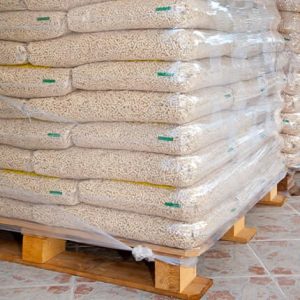
Ensuring the quality of A1 wood pellets extends beyond their production process. The packaging and loading phases are crucial for maintaining the integrity and performance of the pellets, guaranteeing customer satisfaction and operational efficiency. Here’s an in-depth look at the meticulous steps involved in packaging and loading A1 wood pellets for clients.
The Importance of Proper Packaging
1. Protection Against Moisture: ENplus A1 wood pellets must be kept dry to preserve their high calorific value and prevent them from disintegrating. Proper packaging ensures that the pellets remain moisture-free during storage and transit.
2. Maintaining Pellet Integrity: The packaging protects the pellets from physical damage. Durable, tear-resistant materials are essential to avoid breakage and dust generation.
3. Ease of Handling: Good packaging facilitates easy handling, transport, and storage. This is especially important for customers who need to store the pellets for extended periods.
Packaging Process
1. Selection of Packaging Material: The first step is choosing the right packaging material. High-density polyethylene (HDPE) bags are commonly used due to their strength, moisture resistance, and durability. These bags can also be UV-treated for outdoor storage.
2. Filling the Bags: Automated filling machines ensure that each bag is filled accurately, maintaining a consistent weight—typically 15 kg or 40 lbs per bag. This consistency is crucial for inventory management and customer satisfaction.
3. Sealing: Once filled, the bags are securely sealed using heat-sealing technology. This method ensures an airtight seal, protecting the pellets from environmental factors.
4. Palletizing: The sealed bags are then arranged on pallets. Palletizing not only makes the loading process more efficient but also helps in organizing the storage space. Typically, 50 bags are stacked on each pallet, wrapped in stretch film to secure the load.
Loading Process
1. Preparing for Transport: Before loading, each pallet is inspected for stability. The stretch film is checked to ensure that it is tight and secure, preventing any movement during transit.
2. Loading Equipment: Forklifts or pallet jacks are used to load the pallets onto trucks. These machines ensure that the pallets are handled gently to avoid any damage to the packaging or the pellets.
3. Vehicle Inspection: The transport vehicle is inspected to ensure it is clean and dry. Moisture or contaminants in the truck can compromise the quality of the A1 wood pellets.
4. Securing the Load: Once loaded, the pallets are secured using straps and load bars. This step is crucial to prevent the pallets from shifting during transport, which could cause damage to the pellets and compromise their quality.
5. Documentation: Proper documentation, including the bill of lading and quality certificates, is prepared and attached. This paperwork is essential for tracking and verifying the shipment.
Ensuring Quality from Production to Delivery
The entire process of packaging and loading A1 wood pellets is designed to maintain the highest standards of quality. From selecting robust packaging materials to meticulous loading procedures, every step is carried out with precision. This attention to detail ensures that the pellets reach clients in optimal condition, ready to provide efficient and reliable heating.
Customer Benefits
1. Reliable Quality: Clients receive pellets that are free from moisture and physical damage, ensuring efficient combustion and heating performance.
2. Convenience: Well-packaged pellets are easy to handle, store, and use, providing a hassle-free experience for customers.
3. Satisfaction: By maintaining high standards throughout the packaging and loading process, suppliers can ensure customer satisfaction, fostering long-term relationships and repeat business.
To sum up, the packaging and loading of A1 wood pellets play a critical role in delivering a high-quality product to clients. By adhering to rigorous standards and employing advanced techniques, suppliers can ensure that their pellets provide maximum efficiency and reliability. For customers, this means a consistent, high-performance heating solution that meets their needs and expectations.